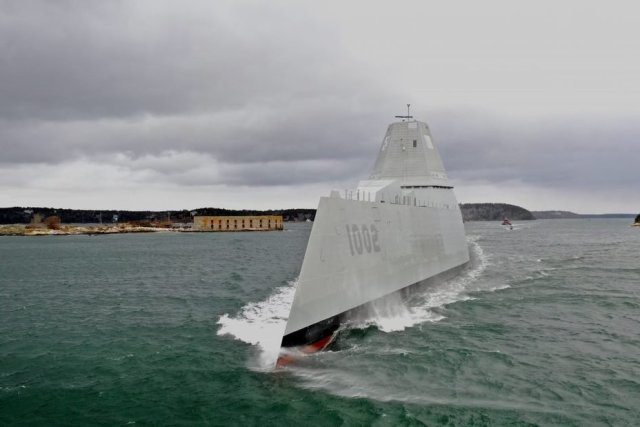The USA has officially completed the last of the experimental Zumwalt-type destroyers. Yesterday, January 14, information appeared on the website of the Naval Institute of the US Navy that the Lyndon B. Johnson (DDG-1002) ship left the Bath Iron Work shipyard and went to Ingalls Shipbuilding in Pascagoula (Mississippi) to activate the combat system.
Lyndon B. Johnson is the third and last ship of the Zumwalt type. Its introduction into the fleet is scheduled for 2024. Earlier, the US Navy stated that these ships would be the first in the fleet to be armed with hypersonic missiles. To do this, it is planned to replace one or both Advanced Gun System (AGS) artillery launchers with vertical launchers.

Destroyer Lyndon B. Johnson (DDG-1002)
Image source: usni.org
The program to create a new generation of destroyers started in the USA in the 90s and has undergone several significant changes. Initially it was called Surface Combatant 21 (SC 21), later it was renamed DD(X), and in 2006 it was approved as DDG 1000. With each change in the program, the parameters of the ships also changed. In addition, it was originally planned to build 32 destroyers, then the scope of the program was reduced to two units, after which the US Department of Defense allocated funds for the construction of a third ship of this class. Later, the US Navy called the size and capabilities of Zumwalt-type destroyers redundant, launching the development of promising ships of the DDG(X) project.
The Zumwalt-class destroyers are experimental destroyers of a new generation, as well as the largest and most heavily armed ships in their class. The basic armament was to include 80 missile launchers, two artillery launchers and two Mk. 110 57 mm anti-aircraft guns. The destroyer is equipped with a power plant capable of generating up to 78 MW of electricity — this amount of electricity was reserved in the ships to power the electromagnetic gun (railgun) and combat lasers, which were planned to be installed on them later. At the same time, Lyndon B. Johnson differs from its predecessors: its polymer stealth superstructure was replaced with steel. This solution made it possible to significantly save on construction, but will slightly increase the radar visibility of the ship.
